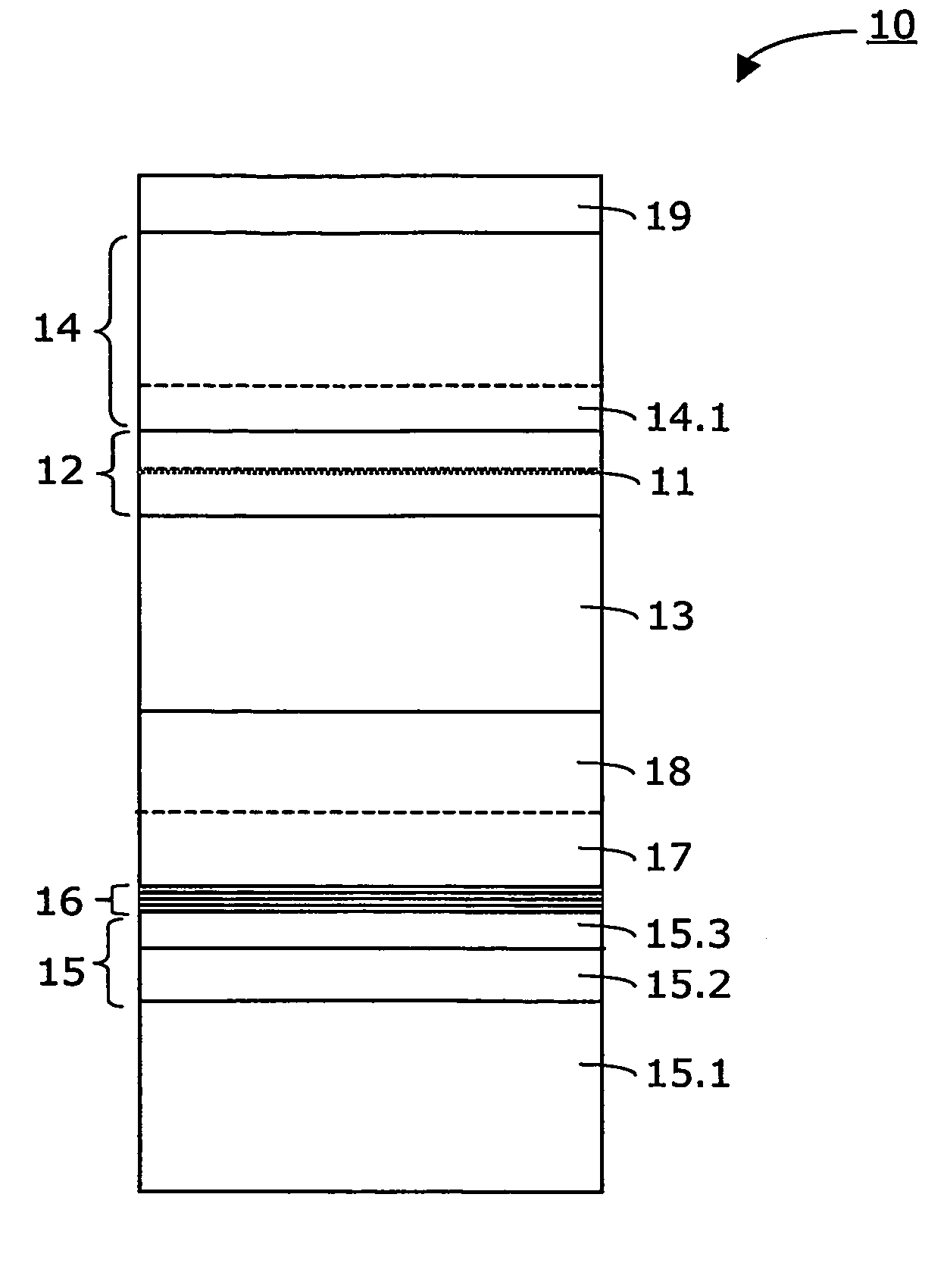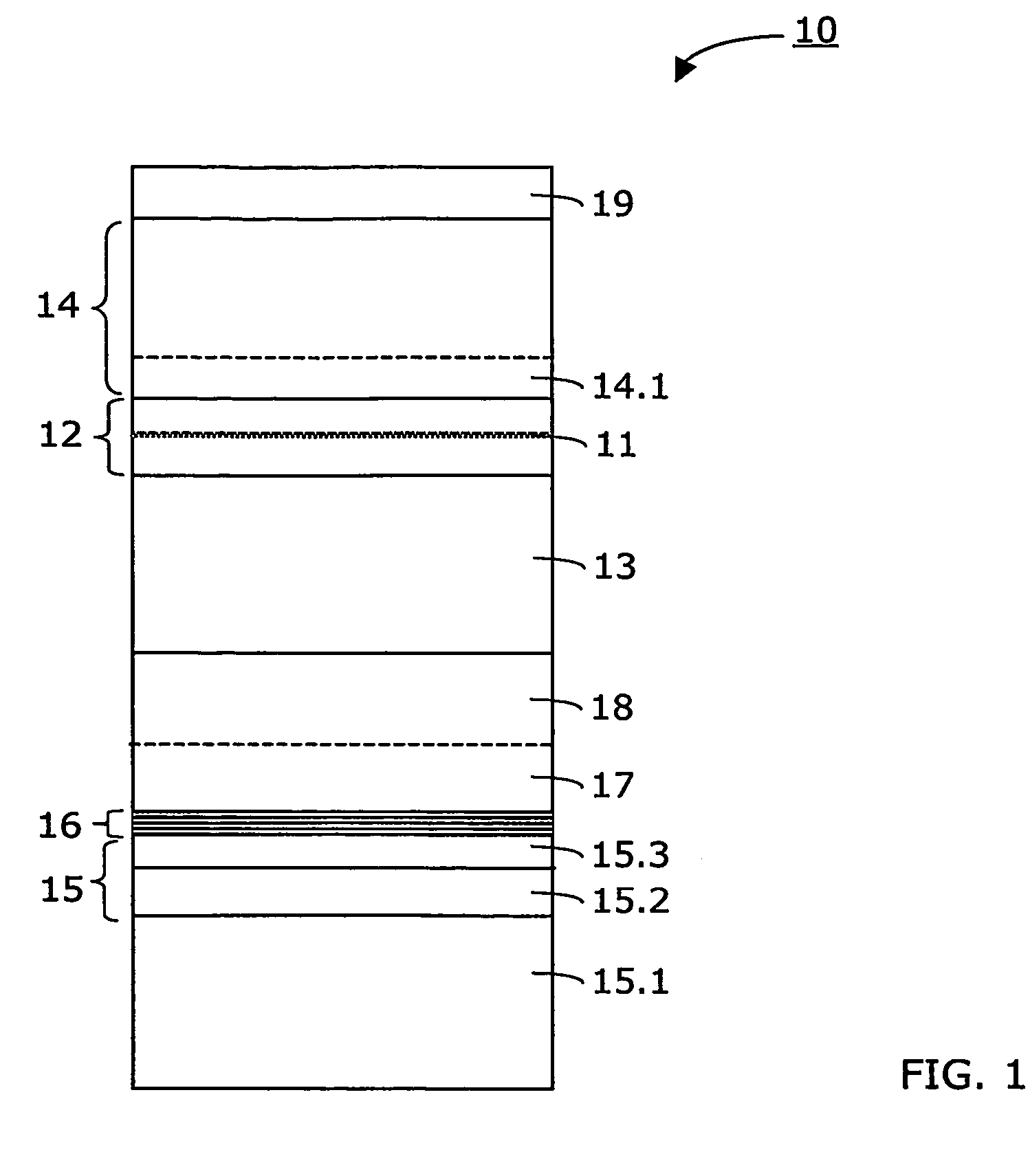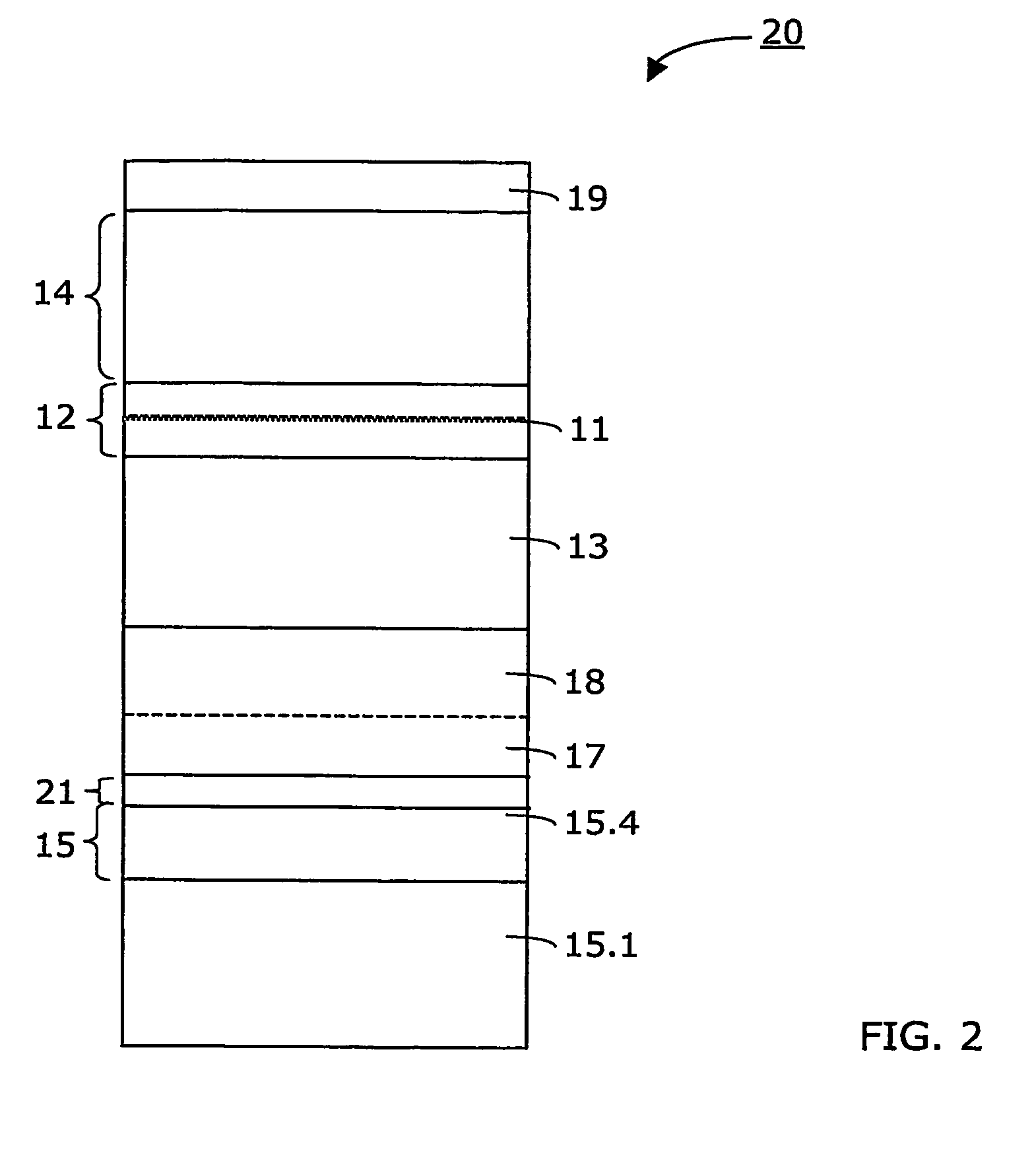InGaAs/GaAs lasers on silicon produced by LEPECVD and MOCVD
a technology of gaas lasers and silicon, which is applied in the direction of laser details, nanooptics, semiconductor devices, etc., can solve the problems of reducing the performance of gaas lasers, reducing the surface roughness of gaas lasers, and reducing the speed of gaas lasers
- Summary
- Abstract
- Description
- Claims
- Application Information
AI Technical Summary
Benefits of technology
Problems solved by technology
Method used
Image
Examples
first embodiment
[0035]Further details of a first embodiment is given in the following table:
[0036]
ReferenceNumberThicknessTypicalof LayerMaterialDopingRangeThickness15.1Si-wafer—100-1000μm~200μm[001]-oriented, 6afterdegree offpolishing15.2SiGe (graded)—0.3-14μm~5μm15.3Ge (pure)—0.5-5μm1μm16As / Gadoped or1-3nm2nmundoped17GaAsdoped or0.2-2μm~0.7μmundoped18GaAsn+-doped,0.2-2μm~0.7μmSi 7 · 1018cm−313Al0.35Ga0.65Asn-doped,1-5μm~2μmSi 2 · 1018cm−312GaAsundoped0.2-0.4μm~0.29μm11InGaAs (strained)—5-15nm~10nmIn concentrationbetween 20-25%14.1Al0.35Ga0.65Asundoped0.1-0.3μm~0.2μm14Al0.35Ga0.65Asp-doped,1-5μm~2μmZn 5 · 1017cm−319GaAsP++-doped,0.1-0.3μm~0.15μmZn 1 · 1019cm−3
[0037]Another laser structure 20, according to the present invention, is depicted in FIG. 2. The corresponding details are given in the following table:
[0038]
ReferenceNumberThicknessTypicalof LayerMaterialDopingRangeThickness15.1Si-wafer—100-1000μm~300μmafterpolishing15.4Ge (pure)—0.5-5μm~2μm21GaAs (formed atdoped or1-3nm2nmTs1)undoped17GaAs ...
second embodiment
[0047]As stated in connection with the second embodiment, the virtual Germanium substrate 15 may comprise a pure Germanium layer 15.4 being formed directly on the Silicon substrate 15.1. The pure Germanium layer 15.4 has a thickness between 0.5 μm and 5 μm, and preferably between 1 μm and 2 μm.
[0048]Preferably, the second Gallium Arsenide waveguide layer 17 is undoped and has a thickness between 0.2-2 μm. It may have a thickness of about 1 μm, for instance.
[0049]The Gallium Arsenide waveguide layer 12 may be undoped. It has a thickness between 0.2-0.4 μm, and preferably about 0.29 μm.
[0050]Several metal organic chemical vapour deposition process steps are carried out when forming the active laser structure. Advantageous results are achieved if the active laser structure comprises an InGaAs quantum well laser structure. Preferably, the active laser structure comprises an InGaAs / AlGaAs / GaAs quantum well laser structure with a compressively strained InGaAs quantum well 11.
[0051]Accordi...
PUM
| Property | Measurement | Unit |
|---|---|---|
| thickness | aaaaa | aaaaa |
| thickness | aaaaa | aaaaa |
| thickness | aaaaa | aaaaa |
Abstract
Description
Claims
Application Information
 Login to View More
Login to View More - R&D
- Intellectual Property
- Life Sciences
- Materials
- Tech Scout
- Unparalleled Data Quality
- Higher Quality Content
- 60% Fewer Hallucinations
Browse by: Latest US Patents, China's latest patents, Technical Efficacy Thesaurus, Application Domain, Technology Topic, Popular Technical Reports.
© 2025 PatSnap. All rights reserved.Legal|Privacy policy|Modern Slavery Act Transparency Statement|Sitemap|About US| Contact US: help@patsnap.com



